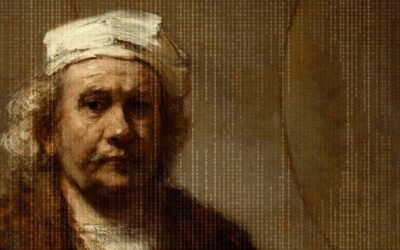Museum Digital Projects: Elements to Include

Rachael Cristine Woody
Continuing our follow up to the “Ask Me Anything: Museum Digital Projects” webinar, this post will address questions we received subsequently in order to provide additional insight, strategies, and resources.
Our thanks to everyone who sent in questions! Your participation helps us craft future content that is of the most use to you, our colleagues.
Today’s Post
Today’s post is focused on digital project elements for inclusion as you form a successful digital project plan.
Q. If I’m just starting out, what elements should I include in my digital project work?
Digital project preparation is considering the Who, What, When, Why, and How questions:
Who: Once the museum digital project has been given the green light it’s time to tap the “who” involved in your project. There are three main camps: Lead, Team, and Stakeholders.
What: There are a few things to establish for the “what” aspect of the museum digital project—the goal and subsequent scope, the project activities necessary to undertake to reach that goal, the standards to follow, and the items involved.
When: Timing is a crucial element to get right for museum digital projects. We’re often working within tight deadlines on multiple projects or tasks that need to be facilitated throughout any given day.
Where: Digitization of collections will take a good amount of space as you’re working with people, collection items, and equipment. Consider where the work will be performed physically. Then consider where the materials will live digitally.
Why: The why of each project will be based on museum mission and strategic plan, grant, or related directive. Knowing why a project is being undertaken and how it fits into the broader context of the museum’s work helps to inform project decisions.
How: The “how” of the project is the nuts and bolts of getting it done. The “how” may include specifications, a process or workflow, and resources (people, knowledge, and tools).
Additional Reading
For additional details on project setup strategy and the elements to include, please view the following posts available via Lucidea’s Think Clearly Blog: The 4 Most Important Museum Digital Project Components, A Thoughtful Approach to Museum Digital Project Creation, How to Establish Museum Digital Project Core Areas, and What to do When It’s Your First Museum Digitization Project.
Q. Do I need to create policies before I start digital project work?
You don’t necessarily need policies in place to start your work, but they should be developed as soon as possible so that quality and consistency can be assured. Specifically, the policies to consider creating and adopting for museum digital project center around the following topics:
- Digitization standards
- Catalog standards
- What goes online
- Takedown policy
- Rights and Use statements
These policies help inform museum staff actions and provide support to activities that require a specific approach or reaction. Policy creation doesn’t have to be a lengthy or arduous process. It can begin with the capture of purpose and an articulation of points to follow or consider. As your museum digital project work proceeds these policies can and should be updated to fit the current reality. Viewing these as living documents—never “finished” and intended to be changed and added to—is the best approach in order to maintain documentation in a form that is accurate and supportive to the work being done.
Conclusion
It can take time to fully engage with each of these elements as you construct your digital projects. Keep in mind that a balanced approach is best as we don’t want you to halt all work until you’ve perfected the approach. Instead, your approach and subsequent projects will be refined over time—allowing you to still make important progress.

Rachael Cristine Woody
Consultant, author, and blogger Rachael Cristine Woody advises on museum strategies, collections management and grant writing for a wide variety of clients. Learn about Lucidea’s Argus solution for museum collections management and digitization and read more of Rachael’s blog posts here.
Never miss another post. Subscribe today!
Similar Posts
No-Code Digital Storytelling Example: Rembrandt’s Self-Portrait at Kenwood House
Explore how English Heritage’s Kenwood House uses the no-code platform Shorthand to bring Rembrandt’s Self-Portrait with Two Circles to life through visual storytelling and interactive design.
Exploring No-Code Digital Storytelling: Hoover’s “Fanning the Flames” Exhibit
Explore no-code digital storytelling with Hoover’s ‘Fanning the Flames’ exhibit. See how interactive tools (Deep Zoom Color Compare & Hot Spot) enhance user engagement and the visual experience.
An Introduction to Scrollytelling for Museums
Discover how museums use scrollytelling and digital storytelling platforms to create immersive narratives. This introduction explores key concepts and approaches to interactive storytelling.
Exploring Self-Determinate Multiple Pathways: An Example of Digital Storytelling
Discover how self-determinate multiple pathways offer flexible interactive storytelling in museum exhibits. Learn from the Tenement Museum’s ‘Your Story Our Story.’






Leave a Comment
Comments are reviewed and must adhere to our comments policy.
0 Comments